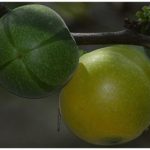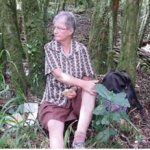TREE LIFE
January 2020
The start of a new year, the start of a new decade, may it be the start of new and exciting things for all members of the Society and for all Zimbabweans
Annual Subs are RTGS100 per family per year (due in April)
MASHONALAND CALENDAR
January 4th 2020, Time: 08:30-10:00; Botanic Gardens, Harare. We will look at anything interesting! Join us for an interesting and informative walk in this amazing garden. Always something of interest. We will start at 08:30am from the usual place – the car park.
Bring a friend and introduce them to the wonders of this facility in the middle of Harare.
Sunday January 19th: Christon Bank. We will be visiting a very favourite spot at the Botanic Gardens Extension at Christon Bank. Christon Bank is situated about 30 km north of Harare. It is an area of rocky hillsides and Brachystegia boehmii dominated woodland near the Mazowe River. Several properties were donated to the National Botanical Gardens in the seventies and have been maintained and protected under the name Mazowe Botanic Reserve. At this time of year there could be some interesting terrestrial orchids as well. It is a super place. Bring your chair, lunch, sun block and cooler bag and a friend, come for a really good day out. You do not have to be a member to join us for the day.
We will meet at CABS Head Office parking area at 0845 for a 0900 start for those wanting to share transport. Alternatively meet at the Botanical Reserve Parking ground at 0930 hours. There will be a car guard – please bring a small donation for his service, and enjoy a day in this very lovely area.
Saturday January 25th: We are going to re-visit Greenwood Park, Herbert Chitepo/Josiah Chinamano/7th Street. This is an historic venue, first planted by the City Fathers to be the Botanic Garden of Salisbury in the 1920’s. Those of us who were on the last visit to this park will remember the very fine specimens of a large variety of trees there. Meet at the Josiah Chinamano entrance (opposite the Police HQ) entrance at 1430 hours.
Tree Society of Zimbabwe website update 27th December 2019
The number of visitors looking at our website has dropped by some 20% in the last couple of months and I can only attribute this drop to the lack of new interesting content. In the same period, all Tree Lifes for the Tree Society of Zimbabwe have been added and many newsletters for the Tree Society of Rhodesia..
In the last month, we have had a total of 524 hits with the top 10 countries visiting the website being: Zimbabwe 261 hits; United States 59; South Africa 39; Germany 31; Australia 25; United Kingdom 21; India 15; Nigeria 6; Canada 5 and Kenya 5.
In the last month, we only had 4 hits on December 8th and then we had 40 hits on Boxing Day! The 3 most visited pages are Tree Nurseries, White Jacarandas and Newsletters.
The content of newsletters for the Tree Society of Rhodesia is presented in a different way. The note, which follows explains:
Note on the tree society of Rhodesia Newsletters
Mr. J. B. Richards, in 1949, conceived the idea of forming a “group/society”, of folk interested in studying and getting to know more about the trees around them, and the Tree Society of Rhodesia was founded with the support of the then Mayor of Salisbury in 1950.
Since that time there have been different forms of communication with members, at first, an irregular letter to members, then a more formal monthly newsletter advising members of Outings and giving members reports on Outings and a general chit chat on what the Society’s Committee was doing in the interests of the community, the Society or trees in general. While the trees seen on various outings were recorded on the Tree List these were only briefly mentioned, sometimes, in the Newsletter. We, the present committee, are not able to find records of these Tree Lists. However, we are so fortunate that three of our members, Mark Hyde, Bart Wursten and Meg Coates Palgrave have comprehensive data on their personal records and these are available on their website Zimbabwe Flora and on Meg Coates Palgrave’s Key to Trees of Southern Africa App.
In 1980 things changed! Tree Society of Rhodesia became Tree Society of Zimbabwe and the new dynamic committee decided that the Tree Society Newsletter should provide a much more detailed account of the happenings within the Society and the name Newsletter of the Tree Society of Rhodesia became Tree Life, Newsletter of the Tree Society of Zimbabwe.
All the issues of Tree Life, Newsletter of the Tree Society of Zimbabwe from No. 1, April 1980 to No. 472, December 2019 have now been uploaded onto the Society’s new website, which is a very comprehensive and searchable site and which can be continually updated. The Society must thank Mr. Tim Masson who designed the website at very reasonable cost and undertook to help us understand how to upload and update information, and our very grateful thanks are also due to Mr. Mark Hyde who has undertaken to host the site for the Society.
Having completed the task of uploading all the Tree Life issues, this was no mean undertaking, there then became the issue of recording all the previous newsletters. This is now 2019 and the Society goes back to 1949!! Finding hardcopy of the old issues of the Newsletter was a mission. What we have been able to lay our hands on has been typed and uploaded in a different format from the Tree Life, each year’s letters in one entry i.e. all issues for 1970 under one heading, 1970. There have been no photographs used from Flora of Zimbabwe to illustrate these issues; instead all the “Featured Images” are photographs of Adansonia digitata, baobab, from the Flora of Zimbabwe website. The baobab is the emblem of the Society.
It is hoped that we will be able to go to the National Archives of Zimbabwe and get more information about the early days of the Society from their records. Sadly, Mary Lovemore who has been responsible for loading all this information onto the new, very impressive website is not able to get to the Archives because of an indisposition. She is hoping that some energetic soul will be able to get to the Archives and find more early information about the Society and then this information will be uploaded as well.
In the meantime, our aim is to have as complete a history of this great little society as possible, and maybe in this age of information on websites, more young aspiring botanists, naturalists or just keen bush lovers will become interested in the environment in which trees play such a major role and keep the aims and objectives of this Society alive and well. Aluta continua.
I thank Mary Lovemore for providing the note above and for all the many hours she has devoted to adding content to the Tree Society of Zimbabwe website.
–Tony Alegria
Botanical Garden Walk, Saturday 7th December 2019
A hot sunny morning greeted us as Tony asked us to say what trees we could identify by their shape.
Jim D, Richard and Sarah, Ryan, Jan, Jim and Ann looked at the trees in the car park. The very distinctive Acacia abyssinica stood out, the Nyanga flat top, it has a very rough bark and the branches near the top of the tree have lots of dry twigs. The characteristic shape is more pronounced in the trees that grow in their natural habitat in Nyanga. The Msasa is a great design of branches bent like elbows and the leaves which wave at you. Acacia karroo has a very black trunk. Yellow balls of flowers and straight thorns. Along the fence are many self seeded Leucaena leucocephala, an alien which has become very invasive. It produces masses of seeds in crowded pods.
We walked along the road along the fence and saw: a large Ficus hippopotami. Swamp fig (new name – Ficus trichopoda ) with aerial roots and heart shaped leaves; Mimusops zeyheri, with milky latex and edible orange fruit; Chionanthus battiscombei, the Water pock-ironwood, with glossy green leaves, paler below, white flowers in lax sprays; Searsia (Rhus) pentheri, a very old tree and it is the only one left; Ficus ottoniifolia has egg-shaped figs with green spots on the trunk of the tree; Flacourtia indica, has compound thorns on the trunk; Caesalpinia spinosa,
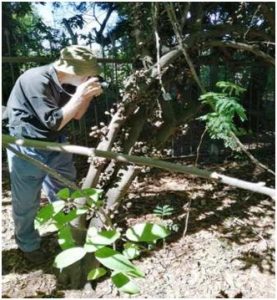
Jim photographing Ficus ottonifolia. Photo: Jan van Bel
which looks like an Albizia was nearly in flower, has many spikes between the nodes, prickles as they can be rubbed off.
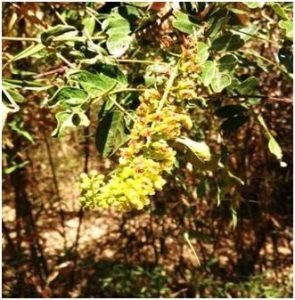
Caesalpinia spinosa-flowering. Photo: Jan van Bel
We then moved away from the fence and came across an Erythrophleum suaveolens. Forest ordeal tree. We took a leaf to compare it with an Erythrophleum africanum. Ordeal tree which we saw later on which occurs on deep Kalahari sand at low altitude. The bark and roots and leaves are poisonous, and the bark exudes an amber-coloured gum.

Tung tree, Vernicia fordii. Photo: Jan van Bel
In the commercial section we saw a large area with bamboos of several different varieties. When the flowers on a shoot dies the whole branch dies back, but new shoots are continuously sprouting from the base. Next to the bamboos was a Jatropha curcas, the diesel oil plant and a Strophanthus kombe. Kombe tai- flower; Sambucus canadensis, Elderberry tree, from which you can make elderberry wine;
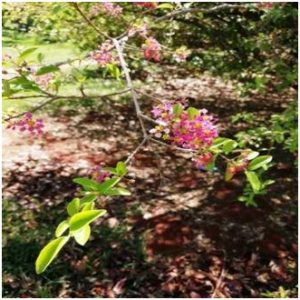
Barbados cherry, Malpighia emarginata. Photo: Jan van Bel
The Barbados cherry was in flower. Annona muricata. Soursop had flowers and fruit growing on the trunk and branches; We also saw the Tung oil tree, the Japanese raisin tree, a Pecan nut tree and a Camphor tree.
Within the herb garden we looked at a globe artichoke with purple thistle like flowers. cassava, rue and comfrey, the bone healer.
Further on we came across a Ceiba pentandra. Kapok tree growing on the root of an old tree.
Lastly we looked at the Tamboti tree, Spirostachys africana which has a milky latex. Smoke from burning the wood can cause nausea and headaches and is poisonous to food cooked over it. The latex is used as a fish and arrow poison
Thank you Tony for an interesting morning.
-Ann Sinclair
TREE OF THE MONTH Warburgia salutaris THE PEPPER-BARK
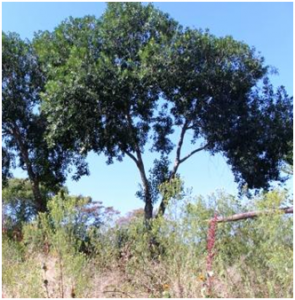
Warburgia tree growing at a Nyazura homestead — Pic credit: Alfred Maroyi (pic supplied courtesy of BGCI)
Our tree of the month is one whose healing properties have brought it to the brink of extinction in Zimbabwe and elsewhere in the region.
The tree is the Pepper-bark, Warburgia salutaris, and for centuries the bark of this small evergreen has been used in traditional medicines to cure everything from sinusitis to influenza.
Unlike rhino horn, the bark has scientifically proven medicinal benefits. Taxonomists knew this when they gave it its specific name, salutaris, which means “health-giving”.
A conservationist in South Africa told me that in the past collection of the bark was done carefully using thin strips taken from opposite sides of the tree. But in modern times, over-collection has seen the trees stripped of all their bark, felled, or even uprooted and carried away.
The tree is now threatened throughout its range, which includes Mozambique, South Africa, Swaziland and Zimbabwe.
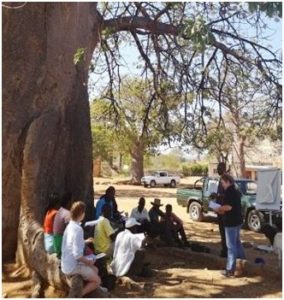
Warburgia workshop in the Mutema Highlands — Pic credit: BGCI
The UK-based Botanic Gardens Conservation International (BGCI), with funding from SAPPI, has been supporting the Vumba Botanical Garden to produce seedlings for distribution to villagers in the Mutema Highlands, south-eastern Zimbabwe.
This is where the tree, known in Shona as Muranga, used to occur naturally.
The seeds for the project were obtained from a single known fruiting tree growing in a Harare garden, as well as from South Africa, according to BGCI’s Yvette Harvey-Brown.
“BGCI first started working with partners to conserve the Pepper-bark tree in Zimbabwe in 2017. One of the key partners to our project is Professor Alfred Maroyi whose research first highlighted that the species is likely to be extinct in the wild in Zimbabwe,” she said.
Efforts are now underway to promote the harvesting of Pepper-bark leaves, which contain the same medicinal compounds as the bark.
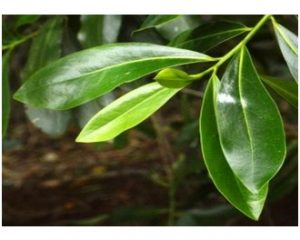
Warburgia leaves — Pic credit: R Truscott — Leaves of the Pepper-bark in the National Botanic Garden
I’d never seen a Pepper-bark tree until, after a Tree Society walk in early December in Harare’s National Botanic Garden, Chairman Tony Alegria pointed out the one growing there. The lone specimen is rather small, and its gnarled trunk bears the marks of past mutilation. But it does have a lot of shiny green leaves.
Worryingly though, the tree appears to have disappeared from the wild.
In his published research in 2008, Professor Maroyi found that only 23 percent of the traditional healers he interviewed in the Mutema Highlands had seen the tree in its natural habitat.
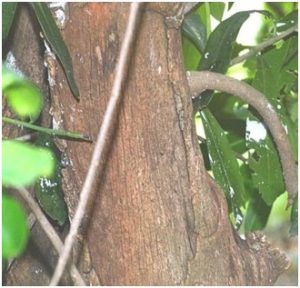
Warburgia bark — Pic credit: R Truscott — Missing bark on trunk of Pepper bark in National Botanic Garden
And those who had, had last seen one between 40 and 60 years ago.
“They reported that the trees that existed near the Tanganda Tea Estate had been uprooted and carried away,” he wrote in the International Journal of Biodiversity Science and Management.
Most traditional healers he interviewed at the time said they got their supplies of Pepper-bark roots and bark from neighbouring Mozambique.
But Yvette, from the BGCI, said that experts from South Africa who travelled to the Mutema Highlands last year said the tree may still be found to exist there.
And it’s hoped that the cultivation of seedlings in nurseries for distribution to private gardens will spare wild specimens from commercial harvesting in Zimbabwe and elsewhere in the region.
“I think highlighting the importance of the medicinal nature of this species has been very important – particularly that the leaves can be harvested in a sustainable way rather than targeting the bark,” said Yvette.
“We would like to engage with traditional healers even more in the future.”
.-Ryan Truscott
Tree Society of Zimbabwe Christmas Social 8th December 2019
This year we held the Christmas Social at Bridgeways thanks to Jim & Ann Sinclair for hosting us in their usual gracious manner. Sadly, we had a disappointing turn out, however those who made it had a very good day. Sorry to the folk who missed a good fun, happy occasion.
First off was tea and coffee with Christmas fare brought by those attending the function. Something unusual was that there was power there to boil the kettles! This was followed by the scavenger hunt, Ann had prepared a list of 30 trees for us to find. Since there were only ten of us and for obvious reasons Ann couldn’t participate, two teams of four and five people set off to find everything on the list. Armed with a shopping bag, the teams had to bring back something that identified the tree beyond any doubt.
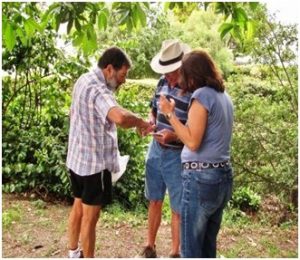
Some monkey business going on here. Scene from Christmas Party. Photo: Isla Grundy
As per usual, no team managed to find all the trees but my team did manage to find nearly all of them. By using a stick and long arms, we managed to get some Tree Wisteria leaves which the other team failed to reach but since they knew exactly where the tree was, they still got the point! The Albizia gummifera posed another problem as the leaves were far too high up to reach but someone spotted coppicing from a surface root and a leaf was duly taken.
The business of identifying what was in the shopping bag went very smoothly. It was a matter of taking out something and naming the tree. If agreed, the tree got the TICK, if there was any doubt then that particular tree received a cross! I’m constantly amazed at what trees are to be found in homes and housing complexes!
After the trees had all been checked then it was time to have the fun quiz and I mean FUN QUIZ! Bill Clarke excels at putting a quiz together with interesting and sometimes naughty questions. Half way through the one hundred questions which were scored after every twenty five, Marina left us just after Sarah had arrived and Sarah duly took her place. After the quiz it was time to have lunch and socialize. During this time we experienced light and more than welcome showers.
It was a good day, thanks to Jim for organizing the venue, Ann for the scavenger hunt and Bill for the fun quiz.
-Tony Alegria
From a newsletter to members of the Tree Society of Rhodesia, dated September 1968.
This is a favourite destination of ours for botanizing and birding at any time of the year and when I came across these notes whilst typing them to upload onto the website, decided that they would be of some interest. MCL
SOME NOTES ON CLEVELAND DAM supplied by Mr. G. H. Tanser in 1968
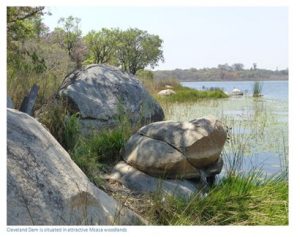
Cleveland dam Photo by ZimFieldGuide
Salisbury is where it is because of the Makabusi. The river was described as a strongly flowing stream with wide pools on September 11th 1890, the end of the dry season. Its headwaters were protected in that they were not surveyed as farms but remained the property of the B.S.A. Company.
In March 1891 a Makabusi pool was sufficiently large for the first aquatic sports to be held. A bottle of whisky at the bottom was the first prize for diving. Within a year erosion of banks had started and the river began to silt up. The water became undrinkable but was used for washing clothes.
The Sanitary Board leased plots at Hillside for the first laundry. The headwaters became a shooting preserve for the Administrator and his friends as wild duck and snipe were plentiful.
In 1900 a scheme for a dam on the Makabusi was proposed, the cost was £65,000 but it met with much opposition and was abandoned. Two years later the new Town Engineer recommended the installation of three windmills with 50 feet diameter sails to pump water from the Makabusi. But this scheme was also turned down.
In 1904 it was reported that an outbreak of enteric fever was due to the use of surface water and that the source of supply was a grave danger to the community.
In 1907 the townsfolk insisted on a swimming bath. The old bathing pool on the Makabusi was cleaned out and screened off with a reed fence. Trees were to be planted at the approach of the rainy season. The opening of the pool was soon followed by complaints of bilharzias. The M.O.H. conjectured the disease entered bodies while bathing and parents were warned against boys bathing. The first civic ‘swimming bath’ failed as an amenity.
In 1909 the MOH again fulminated against the water supply describing it as wholly inadequate, faulty and dangerous, but it was not until 1911 that the BSA Company decided to take action by offering 4000 acres of the Government Reserve to the Municipality as the catchment reservation for the Makabusi in which to construct a dam. A rubble masonry dam, to hold back 100 million gallons of water was proposed.
The Cleveland Dam, named after Councillor M. E. Cleveland, who had been Mayor during the discussions, was opened on May 24th 1913 when the water which was pumped to the first reservoirs at Harman Hill was turned on.
The provision of water led to improvements in gardens and to wide scale tree planting. The streets were watered to abate the dust nuisance.
A swimming bath was now possible and it was opened by the new Administrator Mr. Drummond Chaplin on January 30th 1915.
Despite the Cleveland Dam there were still water shortages. In 1916 the bath was closed and boreholes had to be sunk to increase the supply of water.
The years following were not so difficult though often restrictions had to be placed on supply. In 1922 it was decided to raise the dam wall by three feet. This was done but the next year on Friday July 9th the dam burst. The surging waters washed away the railway, filled the pools and in places changed the course of the stream. However, the wall was soon repaired.
As it was evident that water controlled the development of the town a private bill was passed to obtain water from the Hunyani River.
Cleveland Dam can store 200 000 000 gallons of water. The purification plant which is situated just by the dam wall can deal with 750 000 gallons daily. The water is still used, being pumped to supply chiefly Donnybrook and Mabvuka townships though it also can be fed back into the main city reticulation system.
The Catchment Reservation of about six square miles is a bird and animal sanctuary and its waters are reserved by an angling society.
This is another ‘find’ of great interest. This is Tree Society of Rhodesia Newsletter No 1, as quoted “This is the first of what we hope will be a quarterly newsletter; any suitable articles for inclusion will be appreciated”. What has been of great interest to me as I have been uploading all this information is the “thrust” of the different Chairpersons. Enjoy. MCL
Tree Society of Rhodesia Newsletter April 1959
PROGRESS AT THE ARBORETUM, LAKE MCILWAINE
A one time scene of desolation is to become a place of beauty of particular interest to tree lovers. It is Sentinel Hill and rises steeply on the west side of the dam wall of Lake McIlwaine. Thanks to the work of some members of the Tree Society and the good offices of the National Parks Board, a large area of scrub woodland is being slowly converted into an arboretum. The volunteer workers who go there weekends are not daunted by the knowledge that the task will take fifty years or more to complete. In little over a year a mark has been made that is visible from even the centre of the lake. Scrub has been cleared, leaving promising saplings of the more interesting or unusual species and some two hundred and fifty colourful and exotic trees have been planted.
The work commenced on that portion of the hill most favourably sited to be seen by visitors to the lake. This bit of window dressing, if it can be deemed such, is designed to fit in with the plan, already underway, for the layout of grounds as garden and park in the immediate vicinity of the dam wall. Exotics have been included in this part of the arboretum for the purpose of providing colour all the year round. Gradually as more ground is cleared it is hoped to establish specimens of each of the several hundred kinds of indigenous trees which it is thought would find the conditions here suitable. Discovery on the hill of a specimen each of Lonchocarpus capassa, sometimes called the ‘rain’ tree, and Cassia abbreviata, trees normally found at altitudes of 1500 feet lower, and the moderating local effect of the lake on climate, leads one to believe that the species of trees which would grow here is larger than might be thought.
The lake is named after the late Sir Robert McIlwaine to whose lifetime of personal effort, culminating in first, the chairmanship of the Natural Resources Commission, and then chairman of the subsequently appointed Board, we largely owe Southern Rhodesia’s world leadership in the conservation of natural resources. It was while serving on the Commission in 1938 that he was appalled by the appearance of the hill to the west of the Hunyani Poort which had been stripped of trees for firewood. In striking contrast the hill to the east, covered mainly with large mountain acacia, Brachystegia tamarindoides, perhaps too large to tempt the dealer in firewood, was left untouched. Sir Robert included a photograph showing the contrast, in the Commission’s report. The arboretum site also had a few of these acacias, perhaps the most beautifully shaped of all our trees, and from their roots sprung a coppice growth now being thinned and pruned into promising saplings.
DEVELOPMENT AT THE SCOUT PARK
Another long term project of interest to tree lovers is being undertaken at the Boy Scout Park at Ruwa. Over twenty years ago the Scout Association acquired some two hundred acres of land as a camping site within easy cycling distance of Salisbury. Repeated hacking, lopping and fire had reduced woodland to short scrub and isolated large trees, many of which were damaged. The scrub grew slowly in height but increased in density. In areas denuded and eroded by past cultivation Faurea spp., Protea spp. and a woody Helichrysum came in as pioneers. The greatest degree of recovery took place on termite mounds and on these today are good specimens of a wide variety of trees. Riverine trees are also well represented along the Ruwa river which flows through the Park. In all some eighty species of indigenous trees and tall shrubs have been identified.
Recently in order to provide space for more than one thousand Scouts who will be camping at Ruwa Park during the jamboree week commencing 4th May, and also as a long term silvicultural operation, the scrub has been thinned and the underbrush cut out from the termite mounds. Saplings have been pruned and some surgery undertaken on damaged trees. Visitors will be welcome to the Jamboree and to attend the various arena events, camp for concerts, see press announcements. Parties of tree lovers who would like to include in their visit a conducted tour should advise the secretary of the Tree Society if possible a week before the Jamboree commences. The progressive improvements of woodland by sylviculture should be of particular interest to those lucky enough to own plots containing indigenous trees, but it can be certain that the project will be watched by all tree lovers during the years to come. It is hoped to arrange a meeting of the society at the Scout Park in the near future.
ROADSIDE BEAUTIFICATION
Those of us who have travelled recently by main road to Marandellas and other centres will have been struck by the good growth of trees and flowering shrubs planted along the verges during the past two seasons. This work is of course, being undertaken along many sections of our main roads throughout the territory by the Government Roads Department, whose Commissioner, Mr. J. H. Durr, is a tree lover and member of the Tree Society. The Roads Department welcome assistance from the public for the provision of suitable trees and the care of those planted. However, should an individual desire to plant trees on a road verge he must first consult the Road authority. Obviously any trees planting carried out in a road reserve must follow organized planning and avoid any misplacement which would interfere with sight distance or drainage and other road improvements, and telephone or power lines, whilst these remain within the road servitude. The same holds good for householders in local authority areas. Your efforts will always be appreciated and are even sought, but they naturally must conform to the road authorities’ planning.
TREE SOCIETY MEMBERSHIP
Many people have hesitated to join the Tree Society, possibly for two reasons; firstly, because they were not aware of any interesting outing or activities; secondly, they did not know how they could do anything actively to help. With the development of the Arboretum at Lake McIlwaine any number can help. If you think that any of your friends would be interested in the Tree Society please pass on this newsletter. The Society welcomes new members who will take an active interest in the Society.
The Society’s Committee has during the past year met regularly every month. At these meetings ways of improving the Society’s usefulness are frequently discussed. If you have any suggestions to make that will benefit the trees of Southern Rhodesia or promote greater tree consciousness, please write to us or bring forward your suggestions at our Annual General Meeting on May 2nd.
This is the first of what we hope will be a quarterly newsletter; any suitable articles for inclusion will be appreciated.
Ed. The name of the then current President or the writer of this article is not given, sadly.
TONY ALEGRIA CHAIRMAN


